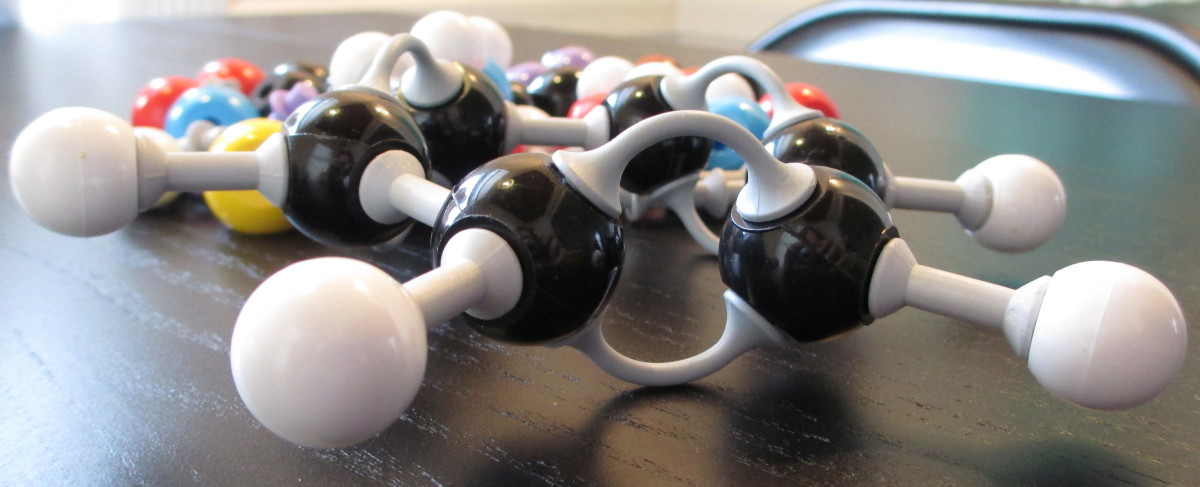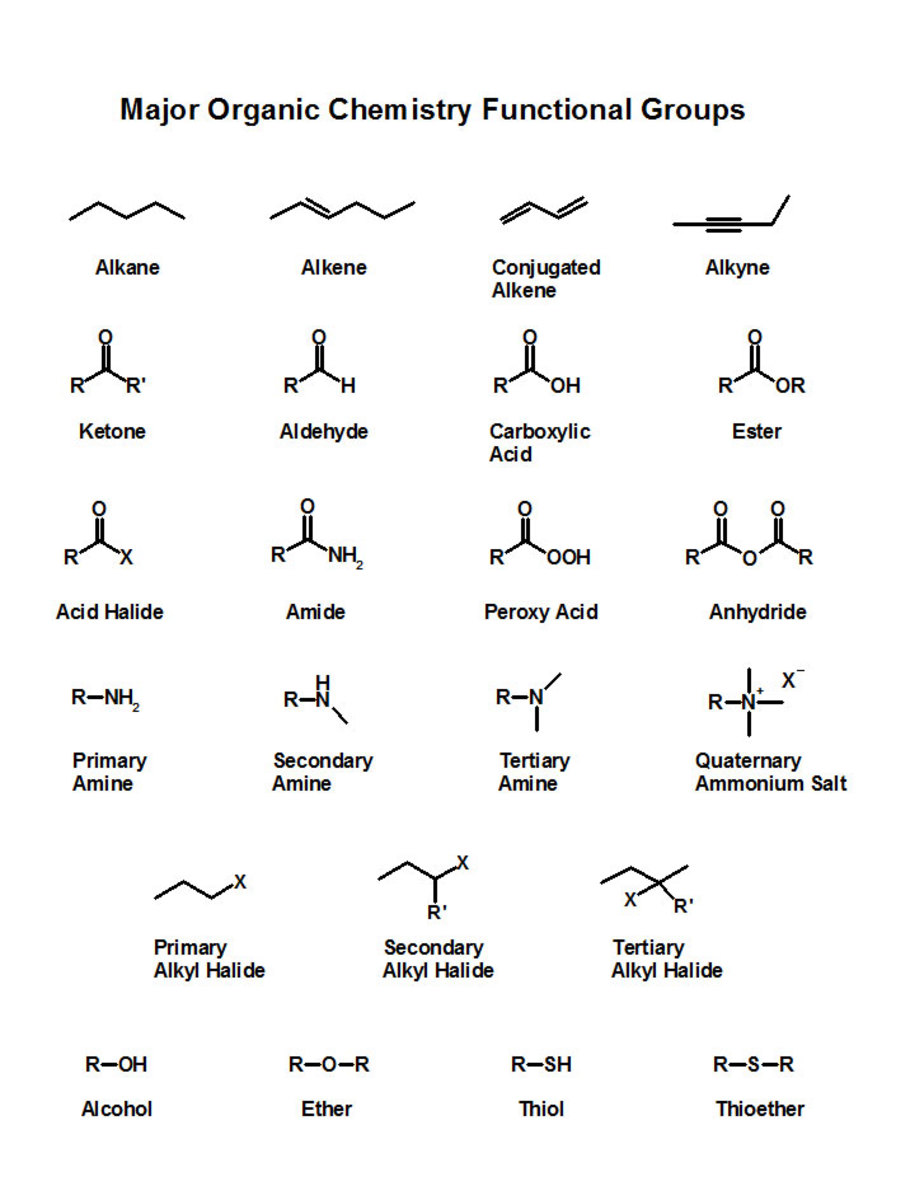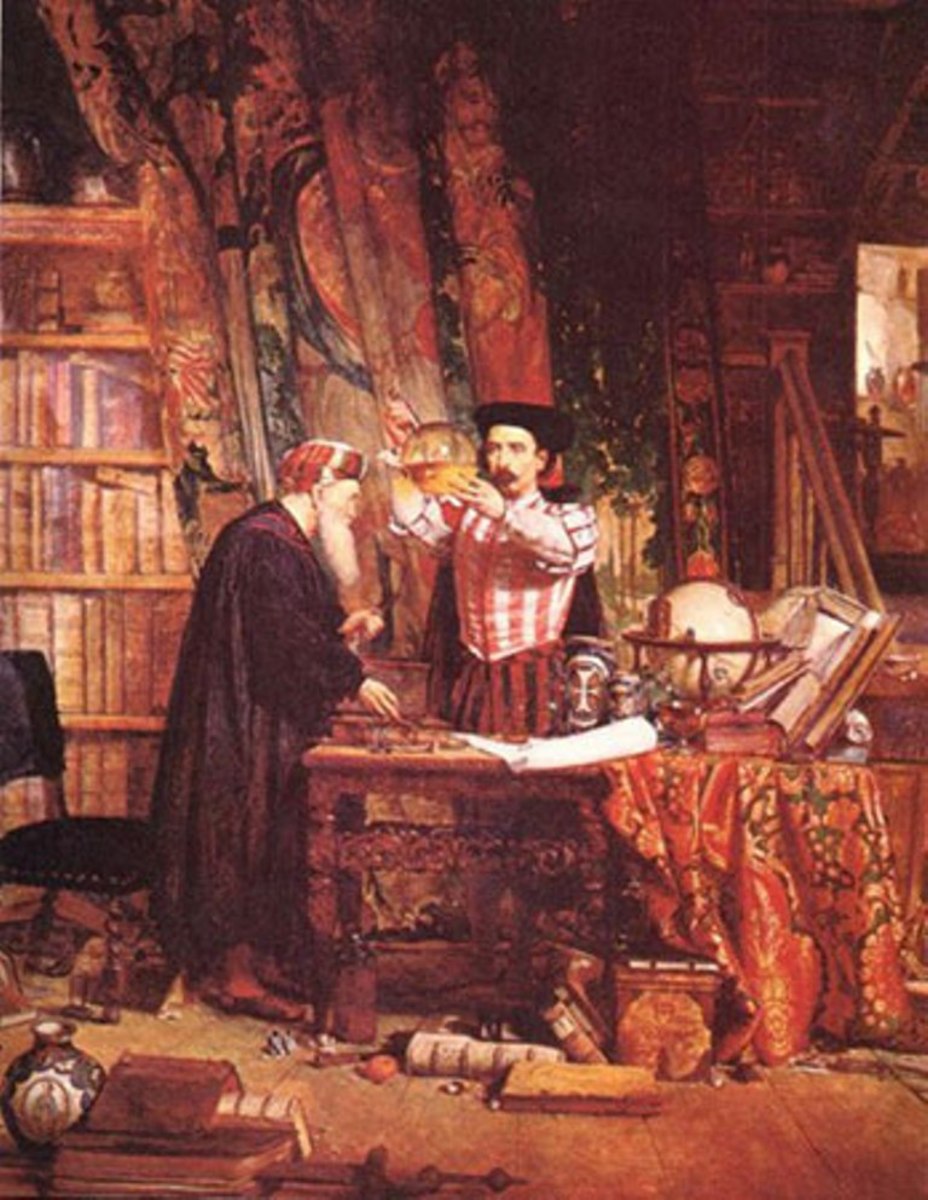AS Chemistry Revision - Calculations and Exam Questions

Equations
Moles of a solid compound:
Moles = Mass ÷ Relative Formula Mass
Moles of a solution:
Moles = (Volume x Concentration) ÷ 1000
Moles of a gas:
Moles = Volume of gas ÷ Volume of 1 mole (24,000cm3)
Amount of atoms:
Amount of atoms = Moles x Avogadro's constant (6.02 x 1023)

Step-By-Step Exam Questions
Question 1 - Part 1 (2 marks):
'Calcium carbonate, CaCO3, reacts with nitric acid, HNO3.
A student neutralised 2.68g of CaCO3 with 2.50 mol dm-3 nitric acid, HNO3.
The equation for this reaction is shown below:
CaCO3(s) + 2HNO3(aq)-> Ca(NO3)2(aq) + CO2 + H2O
Determine the amount, in mol, of CaCO3 reacted.'
- Using the formula above for calculating the moles of a solid compound, we need to divide the mass by the molecular formula mass (Mr).
- Add up the atomic masses of Ca (40.1), C (12) and 3 O's (16 x 3):
40.1 + 12 +16 + 16 + 16 = 100.1
- Now divide the mass of CaCO3by the Mr that you just calculated:
2.68 ÷ 100.1 = 0.0268.
- The amount of CaCO3 reacted was 0.0268 mol.

Question 1 - Part 2 (1 mark):
'Now calculate the volume, in cm3, of CO2 produced at room temperature and pressure (RTP).'
- First of all look for the equation that involves the volume of a gas:
Moles = Volume of gas ÷ 24,000cm3.
- We now have to rearrange the equation in order to find the volume of gas. We already know the amount of moles as we worked it out in the question above. The amount of moles in a compound is the same for all the different compounds in a reaction. If you work out the amount of moles of CaCO3, the amount of moles of CO2 will be the same.
- So, to rearrange the equation you take the '÷ 24,000' part and put it on the other side of the =, changing the ÷ sign to a x sign.
- You then have the equation Moles x 24,000 = Volume of gas.
- Now substitute the figures that you know into the equation:
0.0268 x 24,000 = 640.8
- Therefore the amount of CO2 produced in the reaction of calcium carbonate and nitric acid is 643.2cm3.
Question 1 - Part 3 (2 marks):
'Now calculate the volume of 2.50 mol dm-3 HNO3 needed to neutralise 2.68g of CaCO3.
- First of all find the equation that involves the volume of a solution:
Moles = (Volume x Concentration) ÷ 1000
- Now you need to rearrange the equation to make the volume the thing we are trying to find:
(Moles x 1000) ÷ Concentration = Volume.
- If you look at the original equation:
CaCO3(s) + 2HNO3(aq)-> Ca(NO3)2(aq) + CO2 + H2O
you can see that there are 2 lots of the compound HNO3. This means that we have to double the amount of moles that we calculated for CaCO3, so:
0.0268 mol x 2 = 0.0536 mol. - Now substitute all of the numbers you know into the equation (Moles x 1000) ÷ Concentration = Volume:
(0.0536 x 1000) ÷ 2.50 = 21.44
- Therefore the volume of HNO3 needed to neutralise 2.68g of CaCO3 is 21.44cm3.

Question 2 - Part 1 (1 Mark):
'Graphite is used in pencils but is still referred to as 'pencil lead'.
A student decided to investigate the number of carbon atoms in a 'pencil lead'. He found that the 'pencil lead' was 0.321g.
Calculate the amount, in mol, of carbon atoms in the student's pencil lead (assume that the 'pencil lead' is pure graphite).'
- Much like question 1, we must use the equation for working out the amount of moles of a solid:
Moles = Mass ÷ Mr (relative formula mass)
- Graphite is a form of carbon and therefore you use the Mr of carbon (12) in the equation.
- Substitute the values into the equation:
Moles = 0.321 ÷ 12 = 0.0268
- Therefore the amount of carbon atoms, in mol, in the student's 'pencil lead' is 0.0268 mol.
Question 2 - Part 2 (1 Mark):
'Using the Avogadro's constant calculate the number of carbon atoms in the student's 'pencil lead'.'
- Using the equation amount of atoms = moles x Avogadro's constant we can literally substitute in the values and find the answer!
- We worked out the moles in the previous part of the question so we know that the moles of the 'pencil lead' is 0.0268:
0.0268 x 6.02 x 1023 = 1.61x1022
- Therefore, we can conclude that the number of carbon atoms in the student's 'pencil lead' is 1.61x1022.
All of these questions were found from past papers on the OCR website.
If you found this hub useful you might want to read this hub to learn the basic concepts you'll need to know for your exam.





